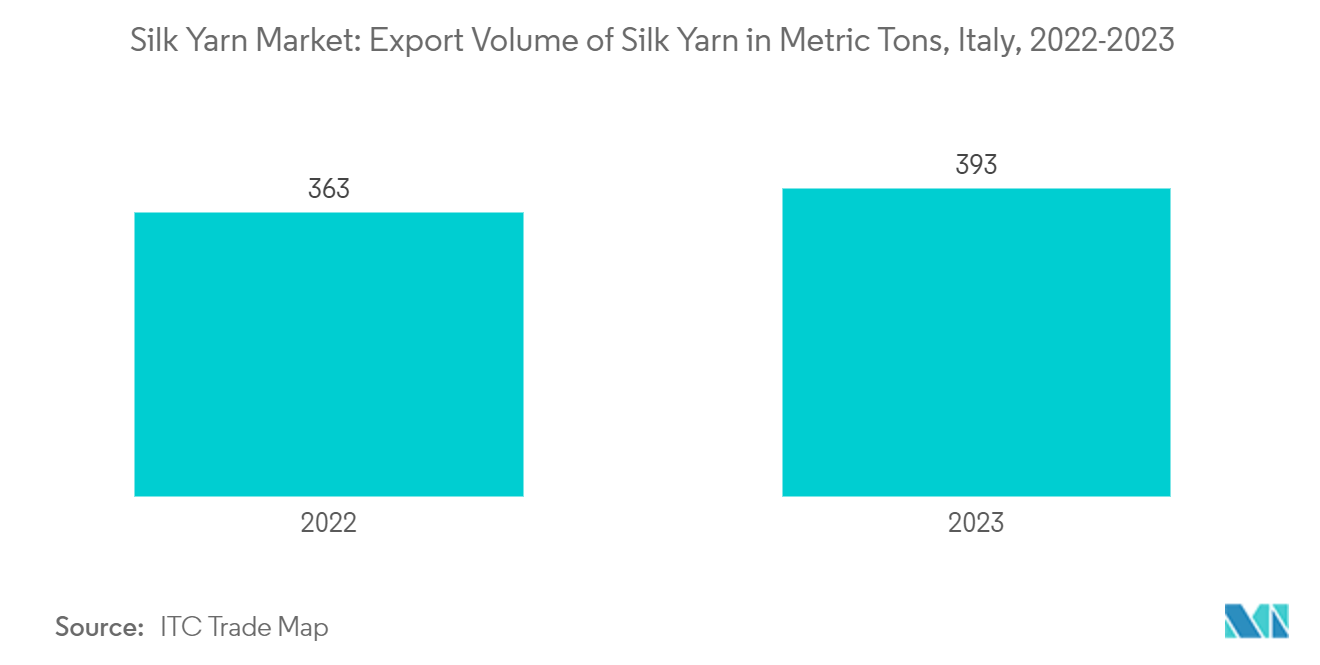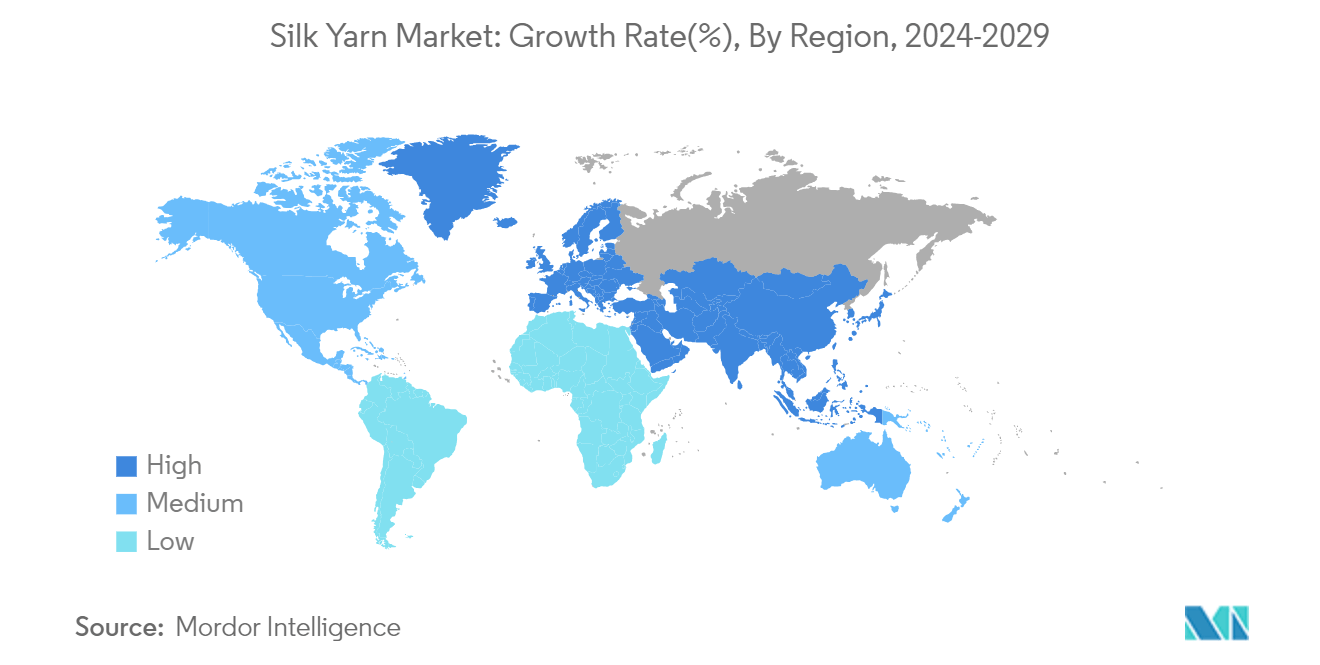Market Trends of Silk Yarn Industry
Italy is the Fastest Growing Country in Silk Yarn Export
Italy boasts a storied legacy in silk yarn production, especially in regions like Lombardy and the city of Como, both of which have been celebrated for their silk craftsmanship over the centuries. Known as the "Silk City," Como stands at the forefront of Italy's silk industry. The region's abundant water supply, sourced from Lake Como and nearby Alpine streams and flourishing mulberry farming in the Po River Valley, creates an optimal environment for silk production. Meanwhile, in southern Calabria, the complete silk production unfolds from silkworm breeding to silk spinning, with San Floro taking the lead in preserving age-old silk-making traditions.
Additionally, silk produced in Lucca includes a unique fabric known as drappi auroserici, crafted from a blend of silk and gold or silver threads. The fabric designs prominently feature motifs inspired by both Chinese and Muslim cultures. Predominantly Italian themes adorn these fabrics, showcasing vine leaves, flowers, and naturalistic elements like eagles and other animals, including lions, wolves, and foxes. As Western Europe's appetite for luxury textiles grows, Lucca's economy has seen a corresponding boost. ONGETTA SRL, a notable player, specializes in silk throwing and offers GOTS-certified organic silk under the brand ONGETTA BIO SILK. With Italy's silk manufacturing model wielding significant influence across Europe, it is poised to steer the silk yarn market in the coming years.
Italy plays a pivotal role in the silk market. According to the ITC Trade Map, Italy's silk yarn exports surged to 393 metric tons in 2023, up from 193 metric tons in 2019. The primary destinations for Italian silk exports include France, Romania, Tunisia, the United States, and Germany. In 2023, France emerged as the top importer, receiving 112 metric tons, with an export volume of 112 metric tons, followed by Romania (105 metric tons) and Germany (38 metric tons). Also, the Italian government supports the international promotion of Italian silk through the Italian Trade Agency (ITA). The initiatives span global trade fair participation, targeted marketing campaigns, and bridging connections between Italian producers and worldwide buyers. These endeavors underscore the government's dedication to upholding Italy's esteemed reputation for premium silk and supporting the industry's global presence.

China Dominates the Silk Yarn Production
China is the world's largest producer and exporter of silk and silk products, including silk yarns. However, the rising costs of mulberry cultivation are forcing many farmers to exit sericulture. Silk is mainly produced in the south of the Yangtze River Delta. Renowned silk-producing regions are Jiangsu, Zhejiang, and Sichuan provinces. Cities such as Suzhou, Hangzhou, Nanjing, and Shaoxing are well-known for their silk industries. According to the International Sericultural Organization, China produced 46,700 metric tons of silk in 2022, which increased to 50,000 metric tons in 2023.
China produces 80% of the world's tussah (wild silk) and 50% of the world's supply of silk yarn. Recent technological strides in silk yarn production have bolstered both quality and efficiency. Automated silk reeling machines have ramped up production efficiency. By reeling silk from multiple cocoons at once, these machines cut down on labor costs and ensure consistent yarn quality. Similarly, modern looms, especially computerized Jacquard ones, craft intricate patterns and designs with unmatched precision. This technological leap has transformed the weaving landscape, paving the way for the production of sophisticated silk yarns. Such innovations underscore China's dedication to progress and sustainability in silk yarn production, propelling the market growth during the forecast period.
To further boost the silk industry, the Chinese government supports training programs to educate farmers and workers on modern sericulture techniques. These programs cover areas such as silkworm breeding and maintenance, mulberry tree cultivation, and the intricacies of silk processing. For instance, in 2021, China partnered with Uganda to develop the silk industry, providing expertise, training, and resources. These incentives encourage the development of the silk industry and help maintain China’s position as the world’s leading silk producer, thereby driving market growth.


